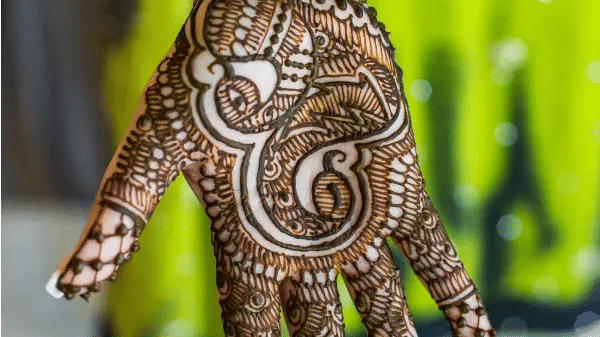With Eid-al-adha just around the bend, ladies of all ages will be flaunting their mehendi- and henna-covered hands while dressed nicely. It’s time to choose your mehendi design for this Eid once you have your sharara and salwar kameez ready, along with any statement jewellery you plan to wear on this special day. We’ve got you covered with some of the best and newest mehendi designs, especially for Eid.
Your entire hand will be covered by the jaal Mehendi design. This style is ideal for you if you want something substantial but not excessive. With this pattern, you can elevate the straightforward tiki-style Mehendi.
Floral patterns are always in style. This one is simple to obtain and doesn’t take much time. When in doubt, choose this Mehendi design with diagonal floral patterns.
Diamond-shape Mehendi is flawless at all times. Both the front and the back of the hand will look attractive.
Here are a few popular henna designs to pick from:
1. Indian
The imagery of mehendi in India and Pakistan is strikingly similar, frequently incorporating prominent floral, peacock, and paisley themes. Many of these themes may be seen in Mughal architecture and design, which also uses them.
Also read: Cinco De Mayo 2022: History, significance and celebrations
2. Arabic
Bold designs made with jet-black henna served as the foundation for the popularity of Arabic mehendi. This distinctive henna design has quickly developed and now comes in a variety of forms. One uses bold designs instead of intricate ones, employing thick lines and a variety of large and little muffs that are filled in a shaded style (similar to how colour is spread using a brush). Thick borders are used in this design to draw attention to the shaded areas. Due of the shading effect applied to the mehndi, when dried and removed, it appears to have three to four colour variations, including black, maroon, dark, and pale orange. Arabic architectural themes are employed in other patterns as well.
3. Afro
These patterns are not complex, just like their Arabic counterparts. Instead, they make drawings for the hands and arms that resemble a dine mesh using basic geometric shapes like lines, squares, and dots that are comparable to tribal art. Mesh is actually a key component of African mehndi.







